Please join Valerie Stivers and Hank Zona for a virtual wine tasting on Friday, August 28, at 6 P.M. on The Paris Review’s Instagram account. For more details, click here, or scroll to the bottom of the page.
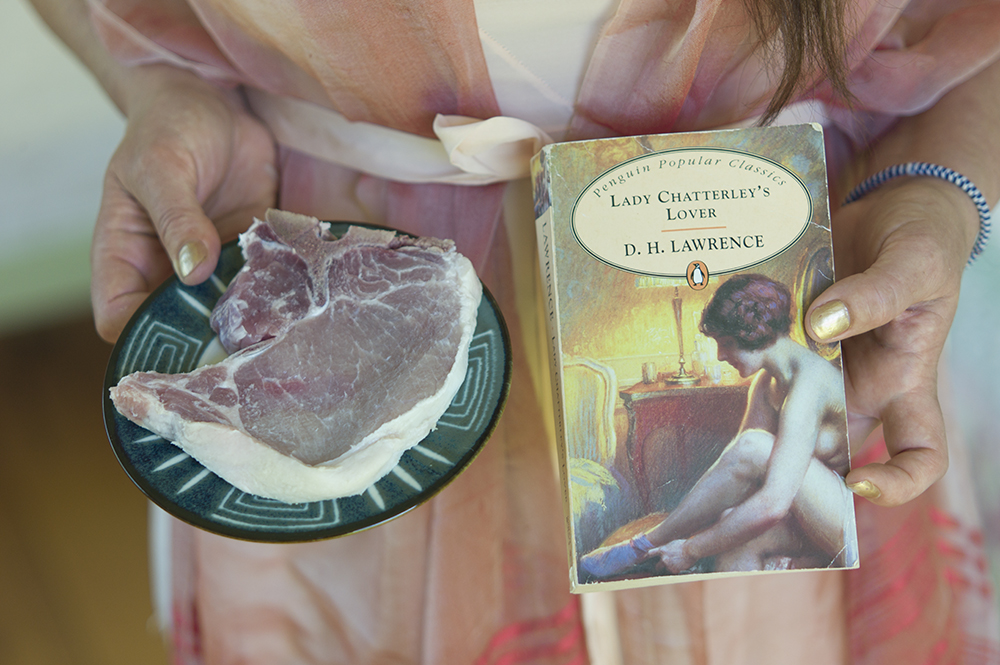
I crusted the gamekeeper’s “simple chop” with mushrooms—not what Lawrence intended but I’ve made the recipe (from his fellow Briton Mary Berry) a half dozen times since.
Few people could have been more off-grid than the English writer D. H. Lawrence (1885–1930) during his sojourn at a cabin eighteen miles northwest of Taos, New Mexico, where he and his wife, Frieda, lived without electricity, kept chickens, built an outdoor oven, made adobe bricks and “a meat safe to hang from a tree branch,” evicted nests of rats, and traveled two miles on horseback for their milk and mail, their butter and eggs. The time Lawrence spent at this place—called “punishingly remote” by the biographer John Worthen in D. H. Lawrence: The Life of an Outsider—was relatively short, a span of months in 1924 and 1925, but he considered it home, and after his death, Frieda returned there to live until her death, in 1956.
It’s a lonely moment for me and an off-grid moment for many of us, so it seems time to pay a visit to Lawrence, his work, and his food—and to ask what can be learned from literature’s most notorious outcast.
Lawrence, David Herbert, was born in poverty in the English Midlands, where his most enduring work, Lady Chatterley’s Lover, takes place. He was the son of a coal miner and a woman come down in the world, and he had brief early success writing about miners. Barely had this tall, thin twenty-three-year-old with blond hair, a red beard, and weak lungs broken in to London’s literary circles when the trouble started. His work was too sexual, too grossly physical—as if it were written “with one hand in the slime,” said one of his detractors. It was the beginning of a career of censorship and suppression, and for the rest of his life, Lawrence lived hand to mouth on a very small income, helped by well-placed friends (including John Middleton Murry, Ford Madox Ford, and the editor Edward Garnett, husband of the great translator Constance Garnett). He was often abroad, where he could live cheaply while the courts were looking for him in England. Lawrence’s personal life was also controversial; he met his great love, Frieda von Richthofen, when she was married to someone else, and for many years, the couple lived openly in adultery, an issue complicated by Frieda’s German nationality and the outbreak of World War I. It wasn’t until 1959, twenty-nine years after Lawrence’s death, that Lady Chatterley’s Lover was published in the United States by Grove Press, which was known at the time for its groundbreaking stance against censorship.
Many of us know the outlines of that story, and also that there has been scanty rehabilitation for Lawrence since then. He is perhaps uniquely capable of the ghastly and ridiculous, and his writings about indigenous people, politics, race, class, and gender contain many statements that are unacceptable to the modern reader. He also had an occasionally violent relationship with Frieda (mutual violence, his biographer says, and not how it has been portrayed), which for years has disqualified him from serious consideration.
I read Lady Chatterley in high school for the dirty parts—disappointing, to the teenage mind—and then again in my twenties to be outraged over the antifeminist parts, in which sense I was not disappointed. Constance Chatterley—a “ruddy, country-looking girl” with a “sturdy body, and slow movements,” “big, wondering eyes, and a soft mild voice”—is married to an English aristocrat who is impotent and confined to a wheelchair from a war injury (the condition, wincingly, serves as easy metaphor for a sterile, industrialized, “unnatural” man). Lawrence believed the sexual relationship between a man and a woman was the central thing in human life; without sex, Connie’s body is “disappointed of its real womanhood,” “flattening and going a little harsh.” She falls in love with Oliver Mellors, the gamekeeper on her estate, who, unlike her husband, can give her “a bit of cunt and tenderness” and wants people to “fuck with warm hearts.” It is very, very important to the narration that Connie let Mellors take the lead in this fucking, that she be submissive to him, and that she do nothing to “get a grip on her own satisfaction.” Supposedly, this just-lie-there approach—described as being a “passive, consenting thing, like a slave, a physical slave”—leads to the most dazzling sexual fulfillment. At this point the young feminist throws the book across the room.
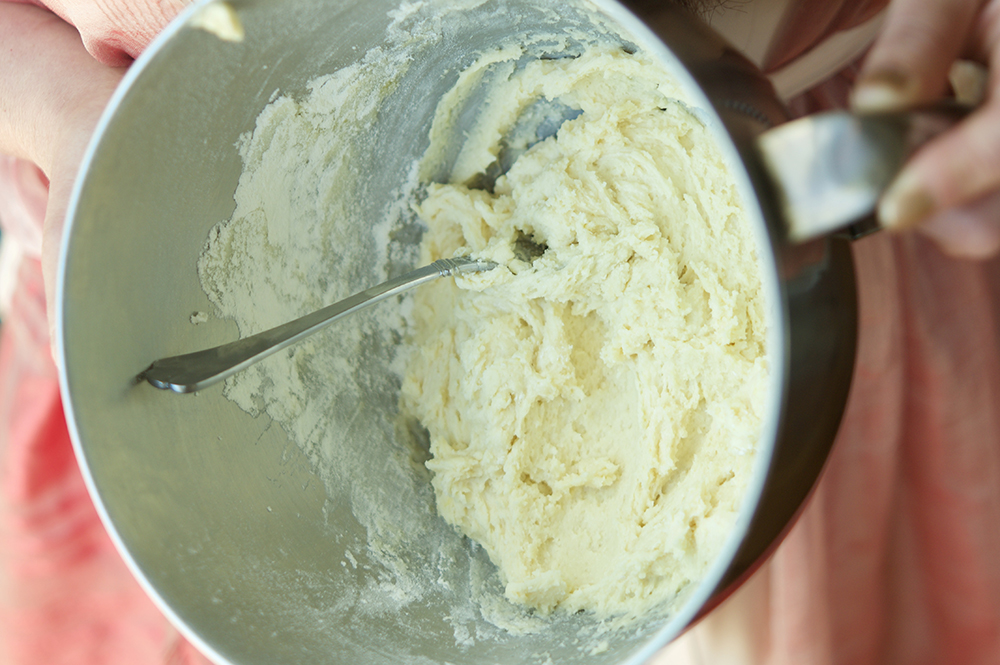
Lawrence loved sex and baked cakes—both very good things. This is the base for an any-fruit cake from ‘The Great Dixter Cookbook.’
To pick the book back up twenty years later, however, is to notice things. Lawrence was a gender essentialist to the bone, and he thought defending maleness was important—it’s amazing how his sensitive, palpitating fingers found our cultural hot buttons a hundred years ago and have stayed on them. The maleness he posits, though, is so different from the one we’re used to that I find it worth listening to. I don’t think anyone has ever written so evocatively about being in the male body during sex, or been so revealing about the sensual and emotional details of experiencing the female body as a man.
Moreover, Mellors is “smallish, sensitive, soft,” and his tenderness, his vulnerability, his deep engagement with Connie’s femaleness—I’ll call it her gender identity, to rag pick the parts I like—depart so drastically from the conventions of manhood in his time and ours that it’s very little surprise Lawrence was suppressed, or that he discomfits readers to this day. While I was rereading Lady Chatterley, I came across an exquisitely stupid opinion column from 2019 that, in the process of bashing the book, fails to understand Mellors’s vulnerability; his class-freighted language makes the opinion writer uncomfortable precisely because it’s not conventionally macho about sex. The book has not held the title of world’s most notorious sex novel for nearly a century because it’s the most graphic thing ever written but because it was and still is subversive of the codes of how we’re allowed to speak about our bodies, our genders, and our desires.
It’s also extraordinary to find a male thinker who considers romantic, sexual love to be the foundation of human society, or any thinker who makes that declaration while having very little use for children and the family. Lawrence is heteronormative, but I find myself wanting to take his thought and build upon it. Unpinned from biological sex (which he’d object to, I am aware), his roles of maleness and femaleness are subtle and generative and crackling with sexual energy. It’s also worth noting that he experienced sexual love and desire for men (feelings that were not acted upon, Worthen says; less credible sources, such as Mabel Dodge Luhan, writing in Lorenzo in Taos, disagree), so maybe a bit of wiggle room here isn’t so wrong.
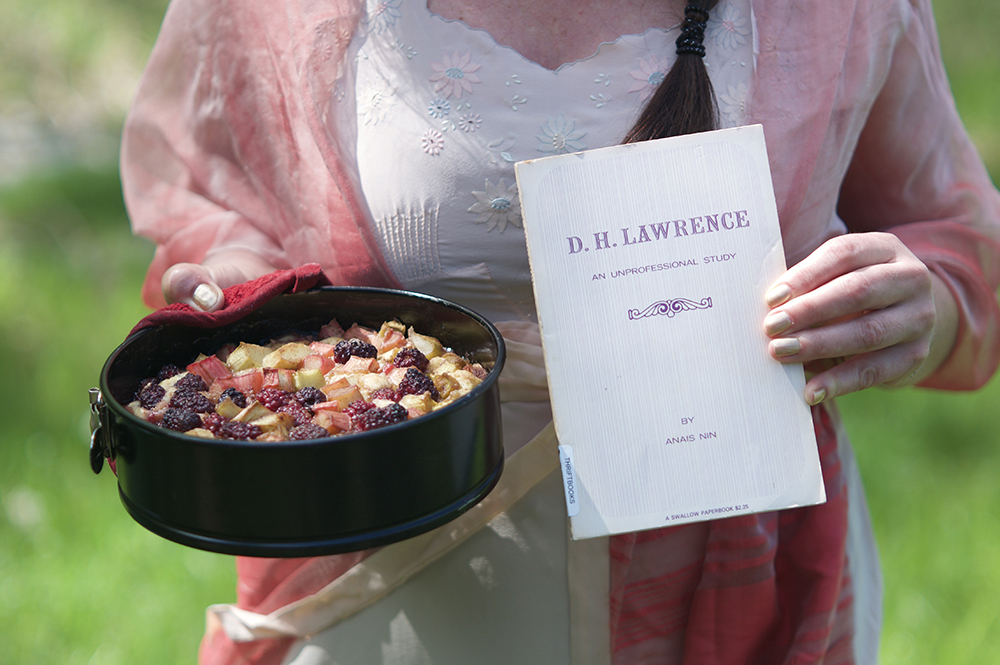
Anaïs Nin understood Lawrence the way few of their contemporaries did. Her monograph on him was one of her first published works.
I’m not alone in thinking so. In 1932, two years after the writer’s death, an as-yet-unknown young woman named Anaïs Nin published a monograph on Lawrence, which is perhaps even more wonderful to read than Lawrence himself and claims much of his thinking as queer space. Nin says Lawrence wrote not to engage our intellects but to evoke a state of consciousness; he “never means what is literally apparent.” Characters are symbolic, “dreams and reality are often interwoven,” and it was “not the truth, but the stirring, live quality of Lawrence’s truth that upset people.” His men and women, then, may not be what they seem.
There’s more: Lawrence’s observations on class, on industrialization (he was of the generation that saw it take hold in the English countryside), on nature and the environment, and on American whiteness, which he wrote about while living in proximity to the indigenous populations in Taos, were in many ways prescient. Even his approach to food feels bizarrely modern.
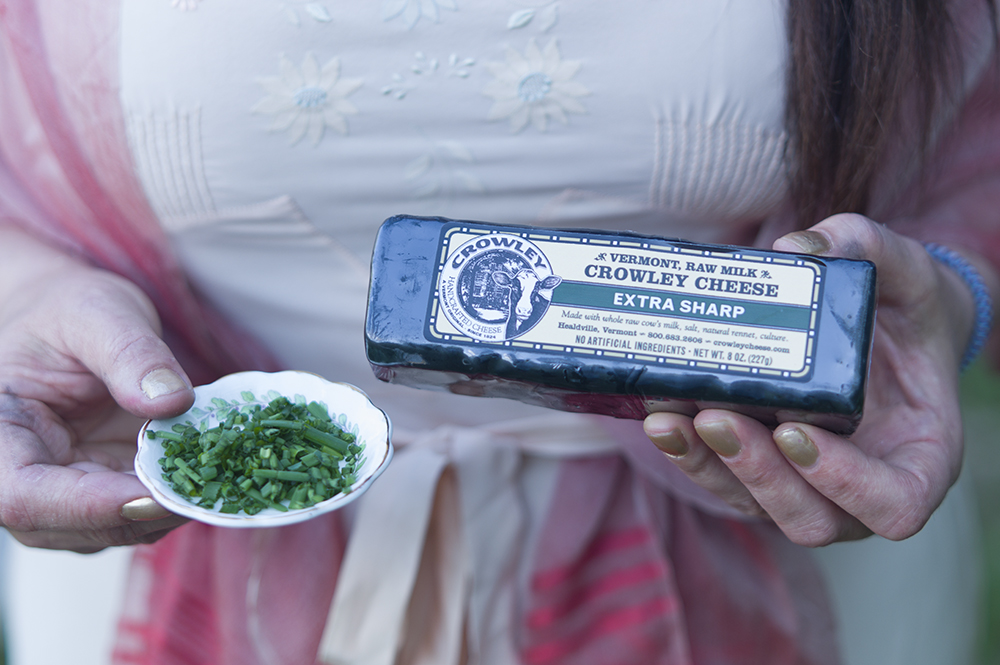
For a dish of “bread with cheese and chives,” I used Crowley Cheese, a favorite local brand in Vermont.
Food appears infrequently in Lawrence’s novels and, when it is specific, is often an example of urban, elitist decadence. At one point in Lady Chatterley, he damns “these manly he-men, these flaneurs, the oglers, the eaters of good dinners!” Conversely, the foods the gamekeeper eats are dogmatically unpretentious—once “a simple chop,” another time “bread with cheese and chives,” both consumed with beer. When the aristocratic Connie and her sister visit Mellors in his house, he taunts them with food that won’t suit them (“boiled ham, cheese, pickled wa’nuts if yer like”). Lawrence did not say that food was political, but he treated it as such. Nor did he predict agribusiness, factory food, and the obesity epidemic, but he saw that industrialization would threaten men’s bodies, and he lamented it, specifically focusing on the bodies of the laboring poor. In the form of factory food, that prediction has been borne out.
On my third reading, I have fallen in love with Lawrence, though it’s a prickly, uncomfortable kind of love that demands regular interrogation. For example, I was aware while setting out to make his food that I am just the kind of sophisticated urban woman he’d think should spend less time ambitiously cooking and writing and more time in bed. Sexist? Maybe. Wrong? Maybe not entirely! I was helped in liking him, also, by knowing that he did all the cooking (and cleaning) for himself and Frieda, and was known for making good bread. There’s not much detail on his food in his letters—“because it was such a normal part of everyday life that he never boasted about it!” Worthen told me. But in one anecdote, after a blowout fight with friends at the Kiowa Ranch, he made amends by bringing over bread and a cake, presumably baked in the outdoor oven he’d built.
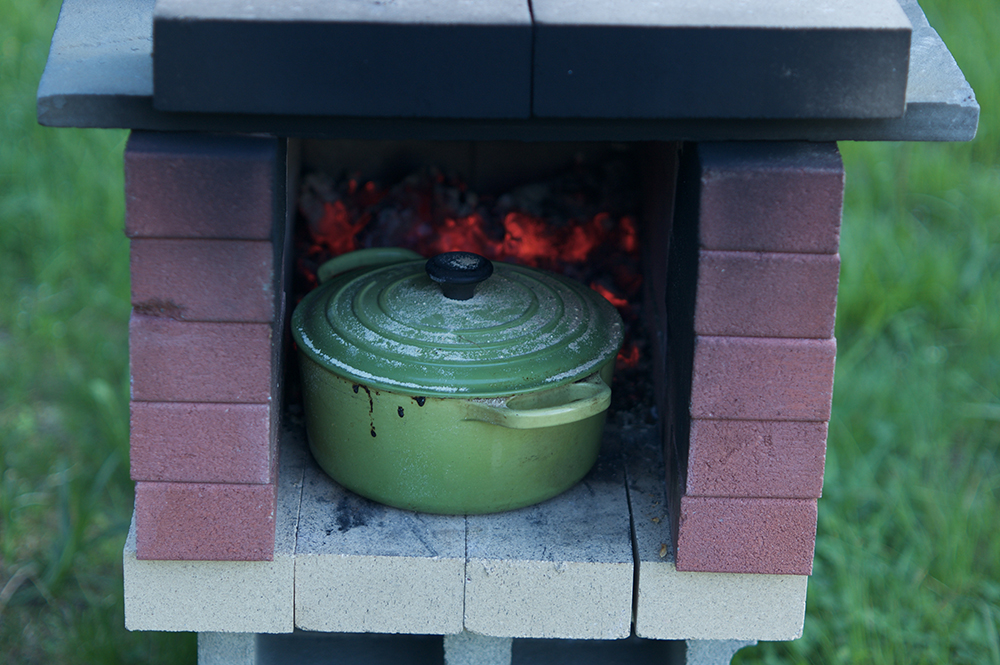
This backyard oven was quick and easy to build. With the help of a Dutch oven, it baked delicious bread.
I settled on two gamekeeper meals from Lady Chatterley—the simple chop and “bread with cheese and chives”—as well as the apology cake, baked with fruit of the English countryside. This kind of unadorned cooking is a challenge because it’s all technique. I needed to make bread from scratch, which has been a problem before. I struggle to fry a tender pork chop. Even with the cake, my go-to favorite for summer fruit involves Madeira, orange zest, and way too many bowls. I had to seek out a plainer recipe. The dishes were so basic that I decided to follow the only preparation instruction the author really offered, and also take advantage of my current countryside location: I built an outdoor oven the way Lawrence did in Taos.
Most DIY bread ovens are made from clay or cob (a mixture of mud and straw) and require a mold of wet sand and the ability to build a template for a brick arch. I would have had to source a variety of materials, and I wasn’t sure I’d have enough time for the various layers to set. Instead, I found a plan on a website to make an oven in an hour that could be adapted for the materials I had easily available: bricks, fire bricks, cinderblocks, and two stone pavers. Stacked together without mortar in a boxlike shape, these items made a chamber barely big enough for a small pizza, but I could build a fire in it, and if I left the coals inside, it was hot enough to bake bread (with a clay or cob oven, you can scrape the coals out, seal up the oven, and bake using radiant heat, but experimentation showed that my bricks did not retain heat well enough to do that).
To round out the meal, I consulted my spirits guide, Hank Zona, for a wine pairing. Despite the gamekeeper’s preference for beer, wine seemed a better fit for my outdoor summer menu. To my surprise, I learned that New Mexico was the first place wine was grown in what is now the U.S., starting in 1548, when it was introduced by Spanish missionaries who planted a grape now known as Mission in the U.S. and Pais in Chile. The New Mexican wine industry declined as a result of floods in the 1940s but has had a resurgence in the past couple decades, and the Pais or Mission grape is newly trendy today. Zona recommended drinking it chilled, and he said my particular bottle, the 215 B.C. Ferment from the Garage Wine Co., would taste like sage and blackberries and be “more like a shrub.” Perhaps I was being an “eater of good dinners,” but I was really looking forward to a cold red and an outdoor fire.
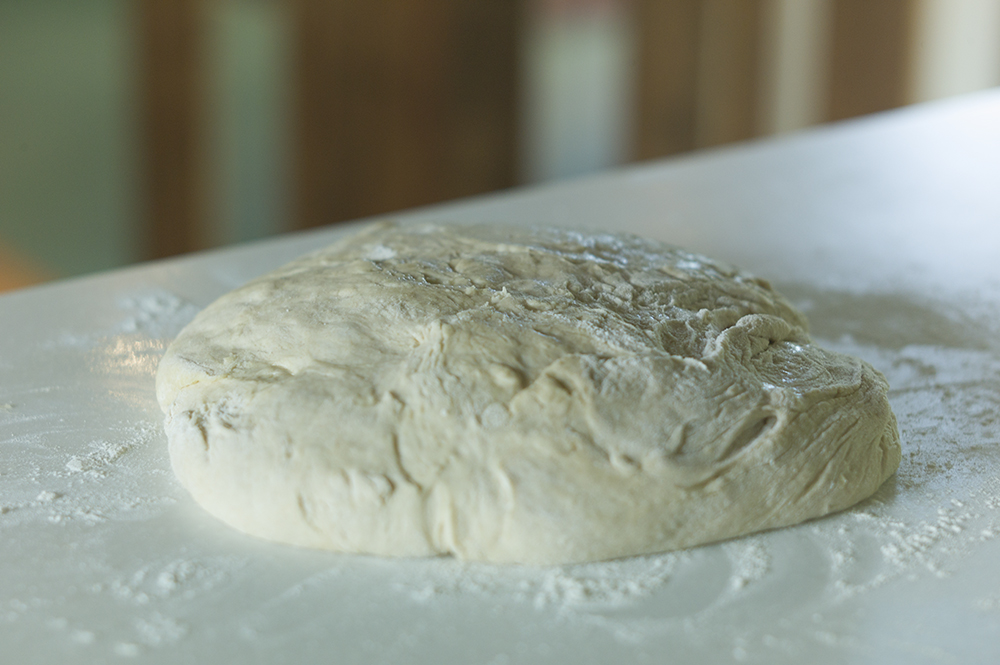
Lawrence hated industrialization and believed that living close to nature was essential for the human spirit. Nothing bespeaks his ethos like homemade bread.
The meal preparations were easy and effective. My simple chop came from a recipe in Mary Berry’s Foolproof Cooking, a tome of English basics. I planned to brine it, add a crust of mushrooms stewed in milk (another preparation once mentioned by Lawrence in a letter), and finish it off by the crackling flames in the outdoor oven. The cake I chose was an “any fruit” summer cake from The Great Dixter Cookbook, a farm cookbook from the English countryside. The bread with cheese and chives would use Crowley cheddar, a Vermont favorite, and a half-white homemade bread. For the bread, I did many things the easy way: I used yeast instead of making a sourdough starter from scratch; I kneaded it with the dough hook on my mixer; I proofed it in the oven with the light on, which is very quick; and ultimately I baked it in a Dutch oven inside the outdoor oven to protect it from the smoke. I’ve now made several loaves this way, and though I have to scrape some charred bits off the crust, they are shatteringly crisp-crusted without and chewy within. The oven works.
The rest of my food was heavenly as well. The cold red wine, in particular, tasted black, piquant, and herby, and it picked up the sage I used to flavor the mushrooms on the pork chops. The cake was easy summer perfection. I would not take D. H. Lawrence by the letter, and can recommend reading him only in critique, but … he does make a good dinner.
Freshly Baked Bread with Cheese and Chives
For the outdoor oven:
Note: This oven was built in a wet, nonflammable New England field. Please follow all fire-safety dictates and regulations in your area.
6 cinder blocks
12 fire bricks
44 measurement red bricks
two 23″ x 12″ paving stones
Find a level surface in a fire-resistant area. Stack the cinder blocks in two three-block layers. Top them with a layer of firebricks, creating a small overhang in both the front and the back (this makes it easier to scrape out the coals, but you’ll need to be careful not to flip the two front bricks when putting items in the oven). Stack red bricks along the sides and back, five bricks high. On top, place the two paving stones and a few extra bricks if you have them to seal the cracks. Build a fire inside near the back, light it, and continue adding wood and building up your bed of coals for about an hour to get the oven nice and hot before baking bread. Pizza or other open-air items can be made near the front even sooner.
For the bread:
This recipe requires a Dutch oven.
a packet of instant yeast
2 cups warm water
pinch of sugar
4 cups half-white bread flour
1 3/4 tsp salt
white flour (for kneading)
olive oil (for the pan)
2 tbs cornmeal
cheddar cheese (for serving)
diced chives (for serving)
Put the two cups of warm water, the yeast, and a pinch of sugar in the bowl of your stand mixer, and stir. Let sit for five minutes, until the yeast bubbles up. If it doesn’t bubble, start again with fresh yeast.
Mix the bread flour and salt, and then add to the water in the mixer. Knead on “stir” with the dough hook for ten minutes. This will be a very wet, sticky dough. Flour your hands, then turn the dough out on a floured countertop, kneading by hand for a few minutes and adding as little flour as necessary to prevent sticking (you want to be sure the dough is soft and pillowy and bounces back some when you poke it with a finger).
Lightly oil the interior of the same bowl you used to mix the dough, drop the dough back in the bowl, cover with saran wrap, and leave to rise until doubled in volume, a process whose time varies based on the temperature of your kitchen (I have been proofing dough in my oven with the light on, and it takes about thirty minutes to double).
After the first rise is underway and you’re able to see how quickly it’s coming along, consider the timing of preheating the oven to 500 or starting the fire in the outdoor oven. You’ll want about an hour to feed the fire and then thirty minutes to preheat the Dutch oven (with the lid on) while letting the flames die down before baking. That means you should start the fire ninety minutes before bake time (if you’re using a conventional oven, preheat it to 500, and put the Dutch oven in half an hour before bake time).
When the dough has doubled in volume, take it out and punch it back down. Lightly oil the bowl again, and return to rise.
Line a clean tea towel with a smooth layer of cornmeal. When the dough has finished its second rise, either put it in the refrigerator if you’re not ready to bake or turn it out onto the countertop, shape it into a ball, and then place it on the center of the tea towel. Flip the edges of the towel over the center of the bread to evenly distribute the cornmeal (you can leave it on the counter for five to ten minutes but no longer, or the dough may rise too much to fit easily into the Dutch oven).
Carefully remove the Dutch oven from the oven (don’t burn yourself). Flip the bread directly into it, cover, and bake for forty to fifty minutes, rotating the Dutch oven once if you’re baking outdoors. If you’re cooking indoors, remove the lid about ten minutes before the end of the bake. Bread is done when it makes a hollow thumping sound on the bottom. Let rest ten minutes before slicing.
Served topped with slices of cheddar cheese and sprinkled with chives.
Pork Chops with Mushrooms
Adapted from Foolproof Cooking, by Mary Berry.
2 pork chops on the bone
2 tbs salt for brine
salt and pepper (to taste)
3 tbs butter, divided
1/2 small onion
3 oz mixed wild mushrooms, sliced
3 sage leaves, chopped
4 tbs milk
1 heaping tbs sour cream
3 tbs bread crumbs
1/3 cup grated cheddar cheese
pinch of salt
Preheat the oven to 400.
Brine the pork chops for thirty minutes before cooking. Remove from the water, pat completely dry with paper towels, and season with salt and pepper on both sides.
Heat a large cast-iron skillet to very hot. Add a tablespoon of butter, and then immediately, before the butter burns, add the two chops. Fry without moving until browned on one side, then flip. When both sides are browned, use tongs to sear the fatty edges as well. Remove and reserve the chops.
Heat a separate skillet on medium-low. Add a tablespoon of butter, then the onion. Fry until the onion softens and begins to brown, about ten minutes, stirring occasionally. Add another tablespoon of butter, the mushrooms, and sage, and toss to combine. Fry for a few minutes. As the pan begins to look dry, add milk by the tablespoon, simultaneously steaming and frying the mushrooms. When the mushrooms have softened, turn the heat down to low, add the sour cream, stir, and cook for five minutes more, until the sour cream is absorbed. Season with salt and pepper to taste.
In a separate bowl, combine the bread crumbs and cheese. Just before you’re ready to serve, top each chop with half the mushroom mixture, followed by half the bread-crumb-and-cheese mixture, and return to the oven. If your chops are skinny, they probably cooked through while browning. If they are thick, they may need ten to fifteen minutes in the oven. Bake until the cheese has melted, the crumbs are toasted, and the meat is cooked through (I did this last step outdoors).
Simple Summer Cake with Any Fruit
Adapted from The Great Dixter Cookbook.
For the batter:
stick of unsalted butter, softened, plus extra for greasing the tin
1/2 cup sugar
1 cup flour
1 tsp baking soda
pinch of salt
2 eggs, room temperature
For the topping:
4 cups of fruit, chopped
1/2 tsp cinnamon
1/4 tsp ginger
1/4 cup white sugar
1/4 cup brown sugar
juice from 1/2 lemon
Preheat the oven to 350.
Butter an eight-inch springform pan. Line the bottom with parchment paper, and butter the parchment.
To make the batter, cream the butter and sugar together in a stand mixer. In a separate small bowl, whisk together the flour, baking soda, and salt. Add the eggs to the mixer one at a time, alternating with half the flour mixture and mixing between additions.
To make the topping, combine all the ingredients in a medium bowl, and toss to combine.
Spread the batter on the bottom of the pan, top with fruit, and bake for forty-five to fifty minutes on top of a foil-lined baking sheet to catch any juices. When the cake is done, a tester in the center will come out clean of batter, though streaked with fruit juices. Serve warm.
Wine!
Please join Valerie Stivers and Hank Zona on Friday, August 28, at 6 P.M. for a virtual literary wine tasting on The Paris Review’s Instagram account. Bring a bottle of one of the specific wines listed below, or any chilled red—and we’ll discuss Lady Chatterley’s Lover, give you tasting notes, and suggest how to pair with food. No drinking experience or affection for D. H. Lawrence required.
Ask for Pais at your local wine store. Some names to look for from Chile for Pais and Pais blends: A Los Vinateros Bravos, Clos des Fous, Garage Wine Co. (the one we used), J. Bouchon, Mauricio Gonzalez, Morande, Onda Brava, Pedro Parra y Familia, Roberto Henriquez, Tinto de Rulo, Vina Gonzalez Bastias, Vina Maitia. Mission wines are available at stores with a trendier selection. Look for Monte Rio Lodi Mission, Pax Wines Mission, and Somer’s Vineyard.
The following is a list of stores in Manhattan, Brooklyn, and New Jersey that have Pais or Mission wines. Anyone outside of those areas who needs help finding a bottle can email us (hank@thegrapesunwrapped.com).
Stores with Pais:
In Manhattan:
Chambers Street Wines
148 Chambers St A
New York, NY 10007
212-227-1434
PJ Wine & Spirits
4898 Broadway
New York, NY 10034
212-392-1160
Some Good Wine
13 East 8th St
New York, NY 10003
212-777-3151
Union Square Wines
140 4th Ave
New York, NY 10003
212-675-8100
Verve Wine
24 Hubert St
New York, NY 10013
212-810-2899
Wine Therapy
171 Elizabeth St
New York, NY 10012
212-625-2999
In Brooklyn:
Blanc et Rouge
81 Washington St
Brooklyn NY 11201
718-858-9463
Grain & Vine
190 Union Ave
Brooklyn, NY 11211
718-782-9463
Leon & Son Wine and Spirits
995 Fulton St
Brooklyn, NY 11238
347-689-9253
Michael Towne Wines and Spirits
73 Clark Street
Brooklyn, NY 11201
718-875-3667
Uva Wines
237 Bedford Ave
Brooklyn, NY 11211
718-963-3939
Vanderbilt Wines
573 Vanderbilt Ave
Brooklyn, NY 11238
718-398-1800
In New Jersey:
Bottle King
343 W Mt Pleasant Ave
Livingston, NJ 07039
973-740-0711
Cool Vines
350 Warren St
Powerhouse, Jersey City, NJ 07302
201-432-8910
Gary’s Wine
Bottle Hill/Rose City Shopping Center
121 Main St
Madison, NJ 07940
973-822-0200
Riverview Wines
43 Bowers St
Jersey City, NJ 07307
201-420-8900
Stirling Fine Wines
1168 Valley Rd #5
Stirling, NJ 07980
908-647-5580
The WineBuyer
1950 Rt 23
North Wayne, NJ 07470
800-946-3937
Stores with Mission wines:
In Manhattan:
Union Square Wines
140 4th Ave
New York, NY 10003
212-675-8100
Verve Wine
24 Hubert St
New York, NY 10013
212-810-2899
Wine Therapy
171 Elizabeth St
New York, NY 10012
212-625-2999
In Brooklyn:
Dandelion Wine
153 Franklin St
Brooklyn, NY 11222
347-689-4563
Leon & Son Wine and Spirits
995 Fulton St
Brooklyn, NY 11238
347-689-9253
Valerie Stivers is a writer based in New York. Read earlier installments of Eat Your Words.
from The Paris Review https://ift.tt/3jXfCT9
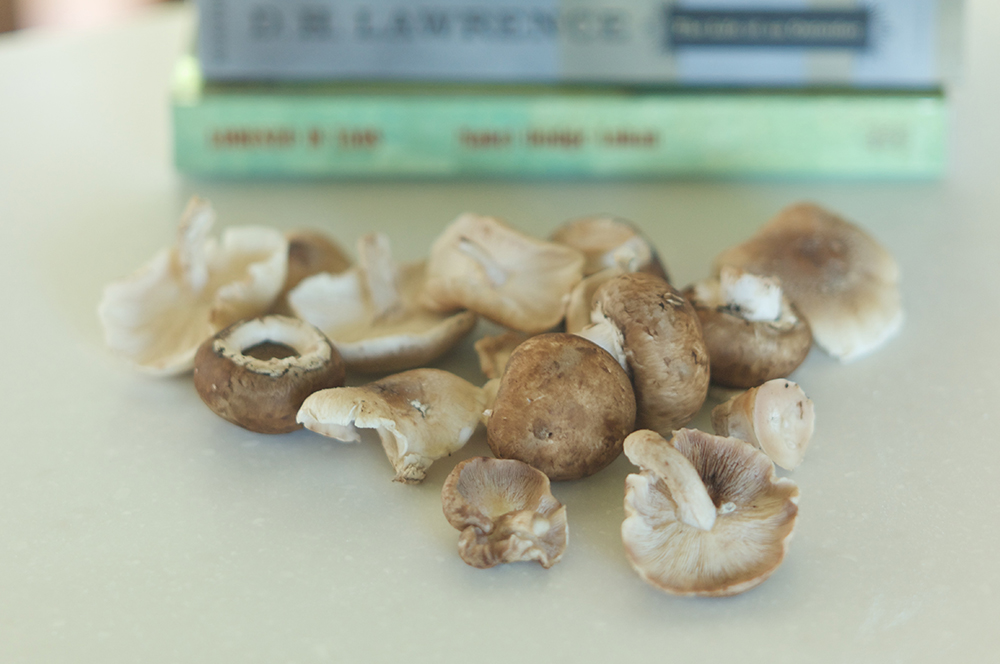
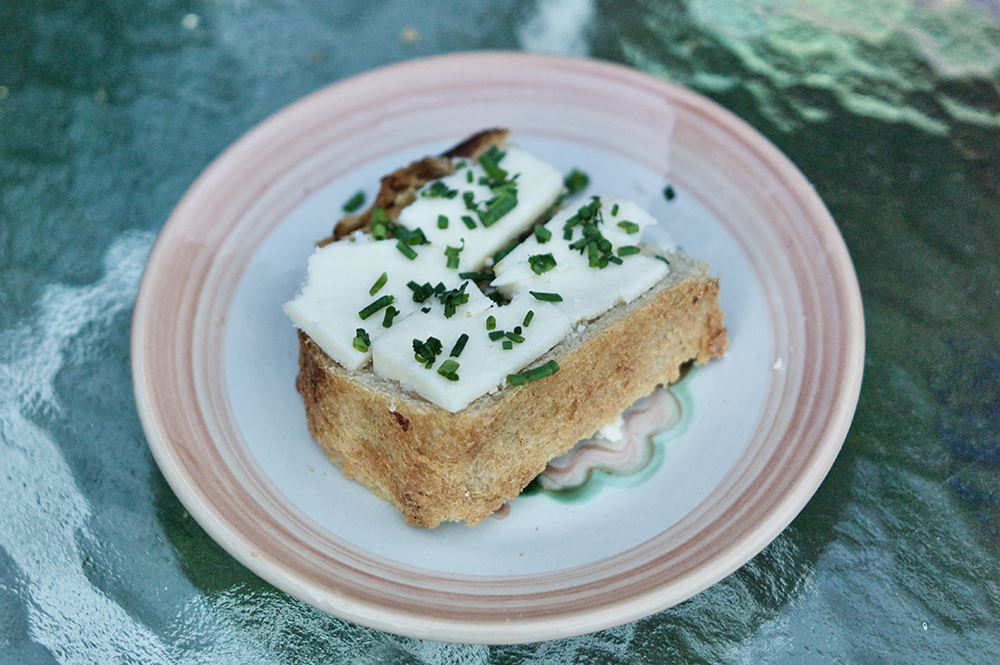
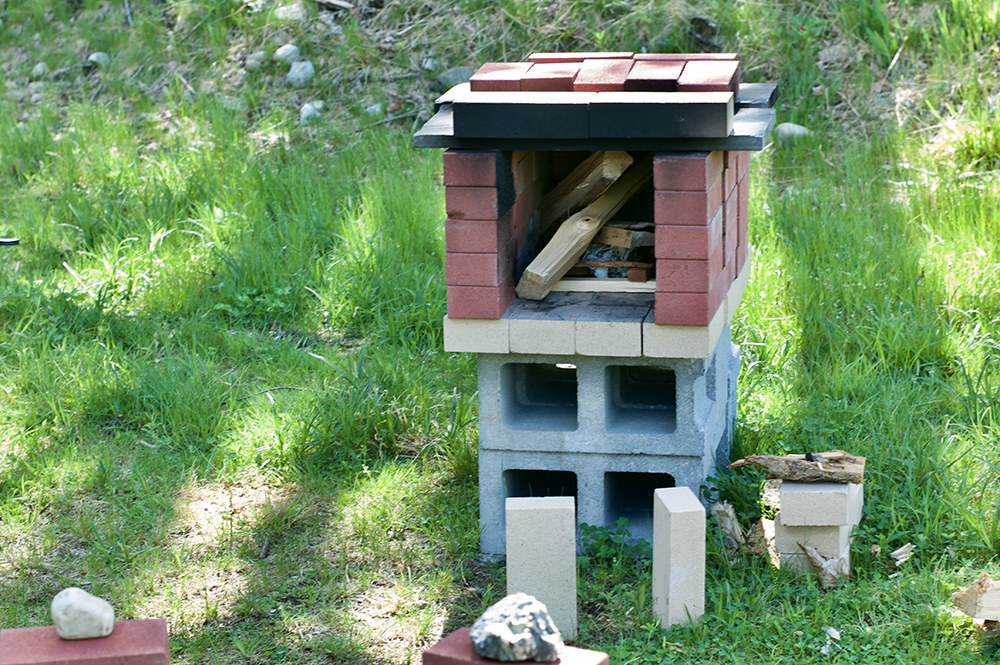
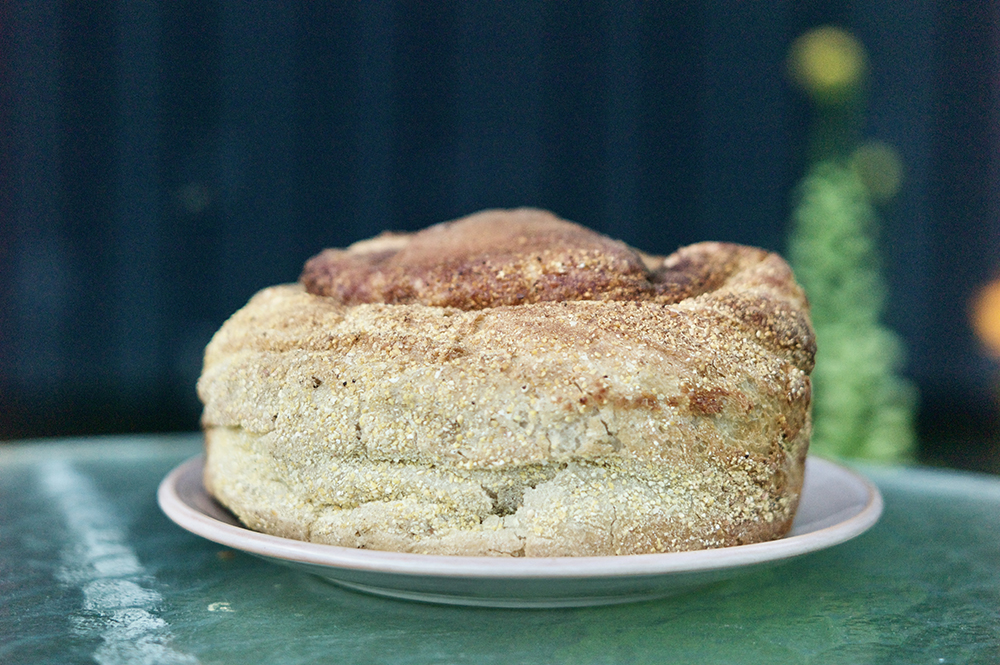
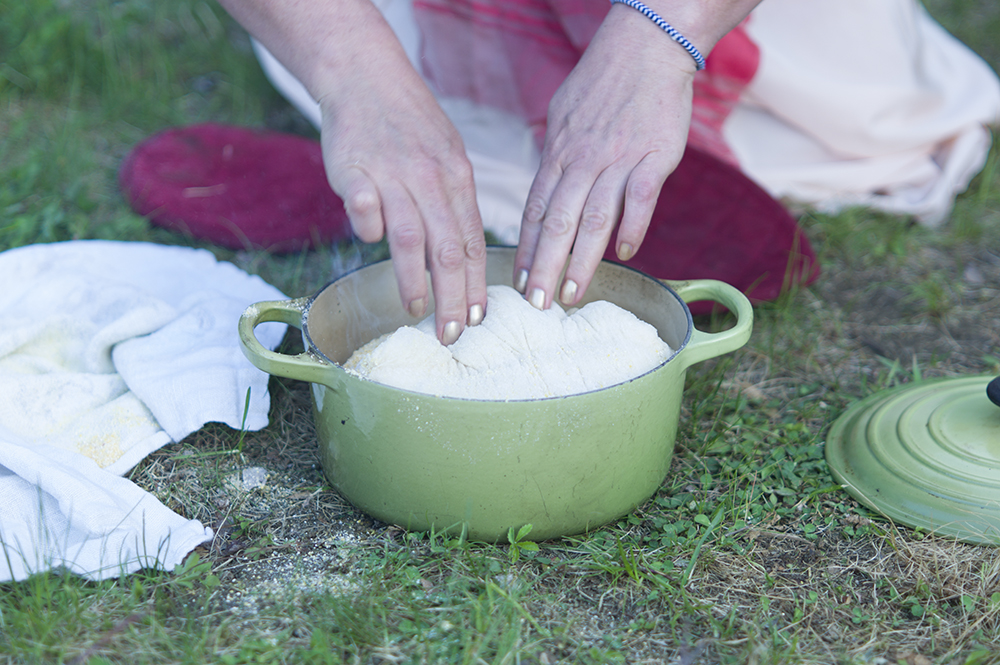
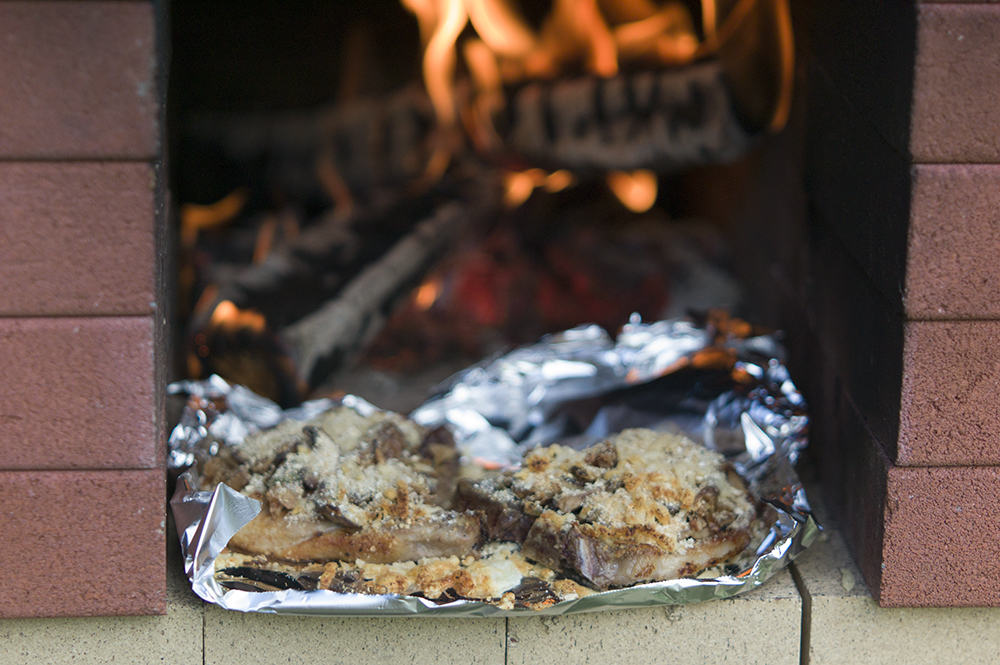
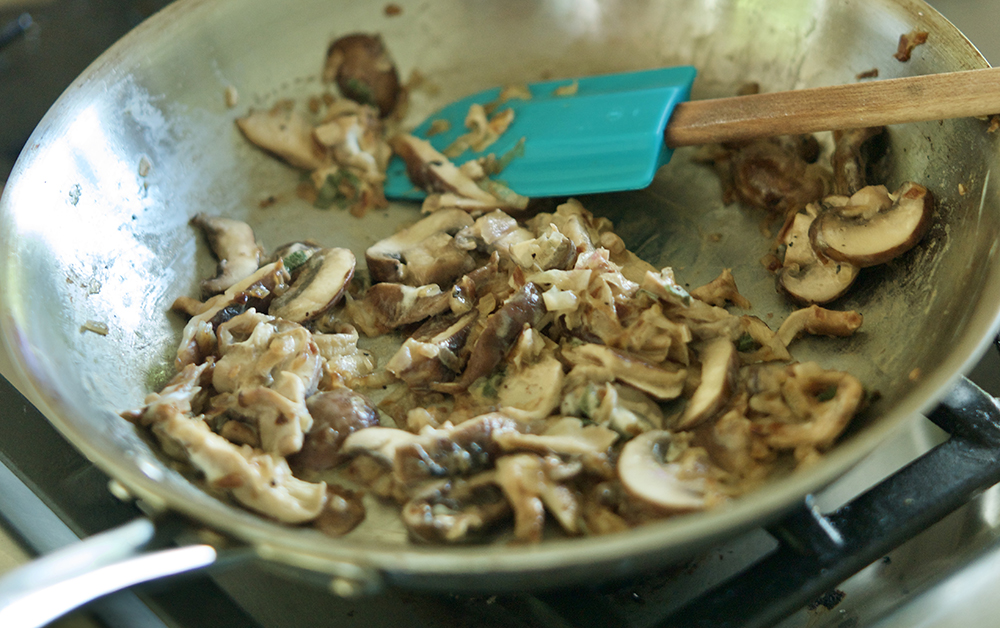
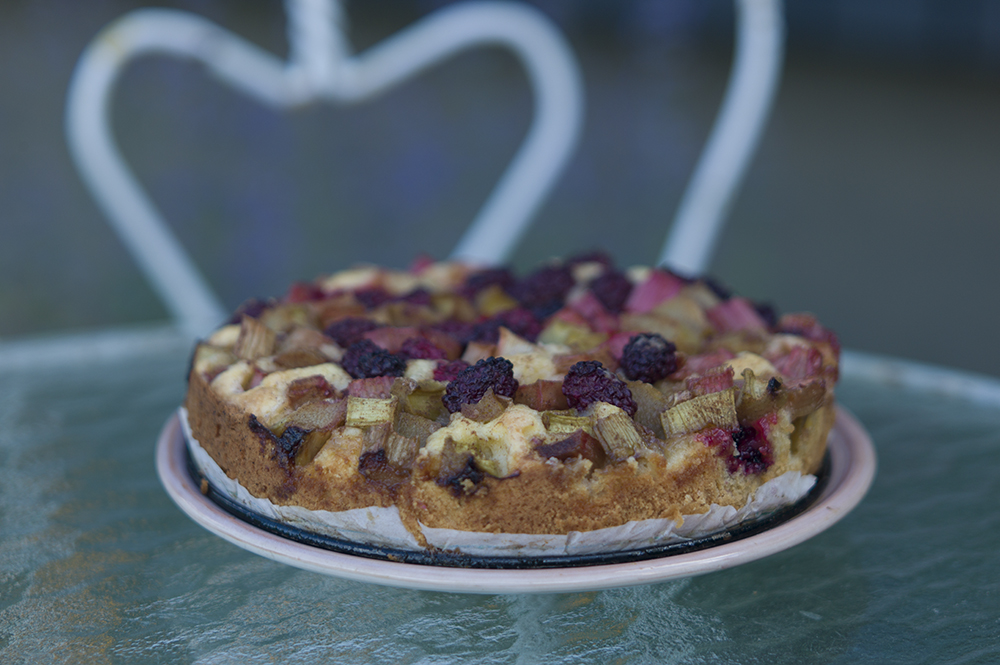
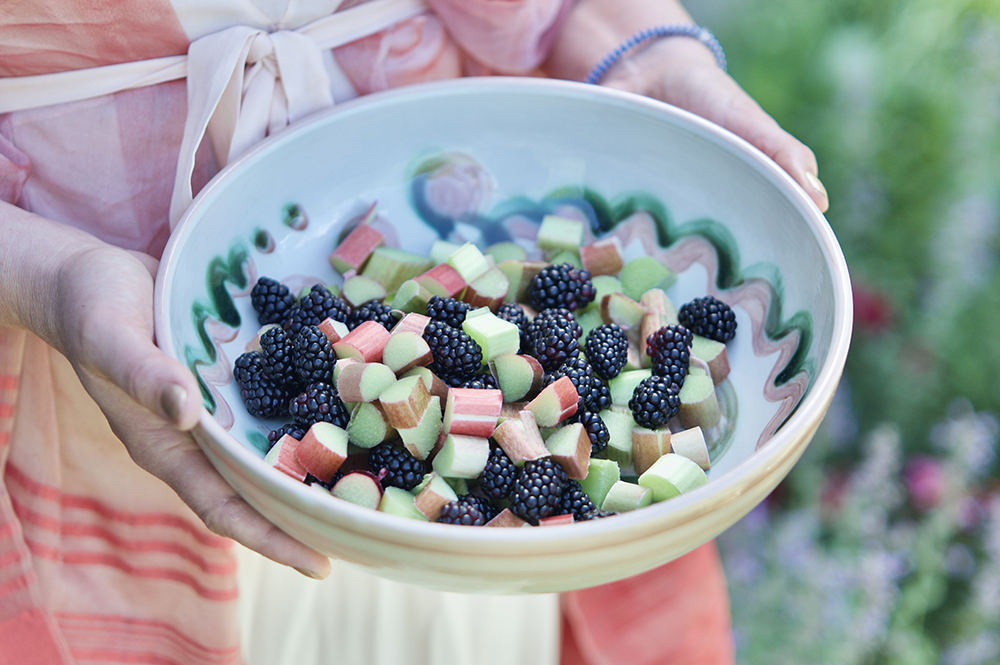
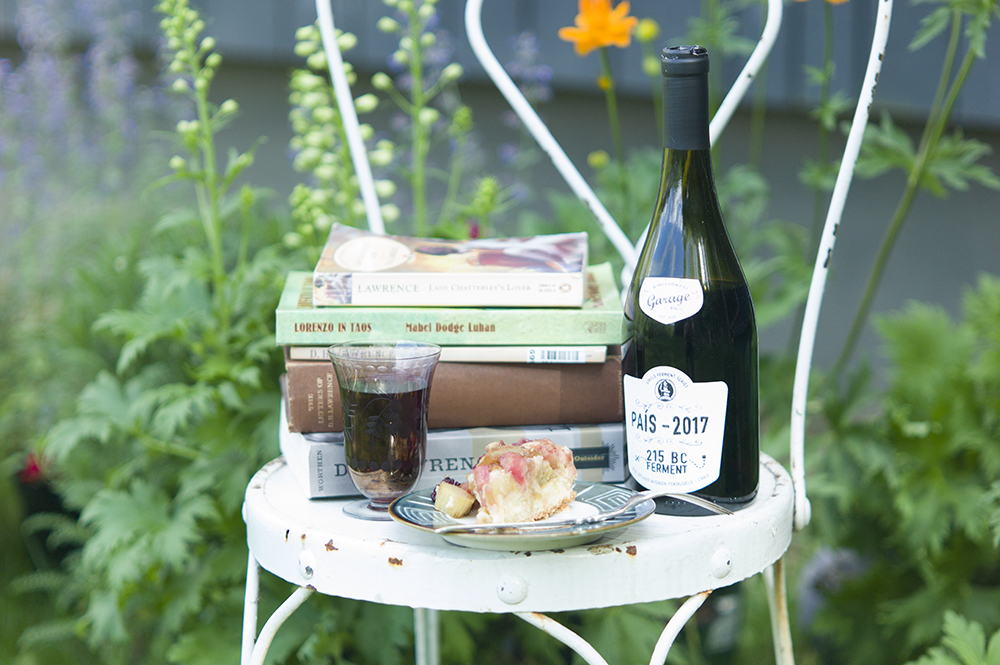
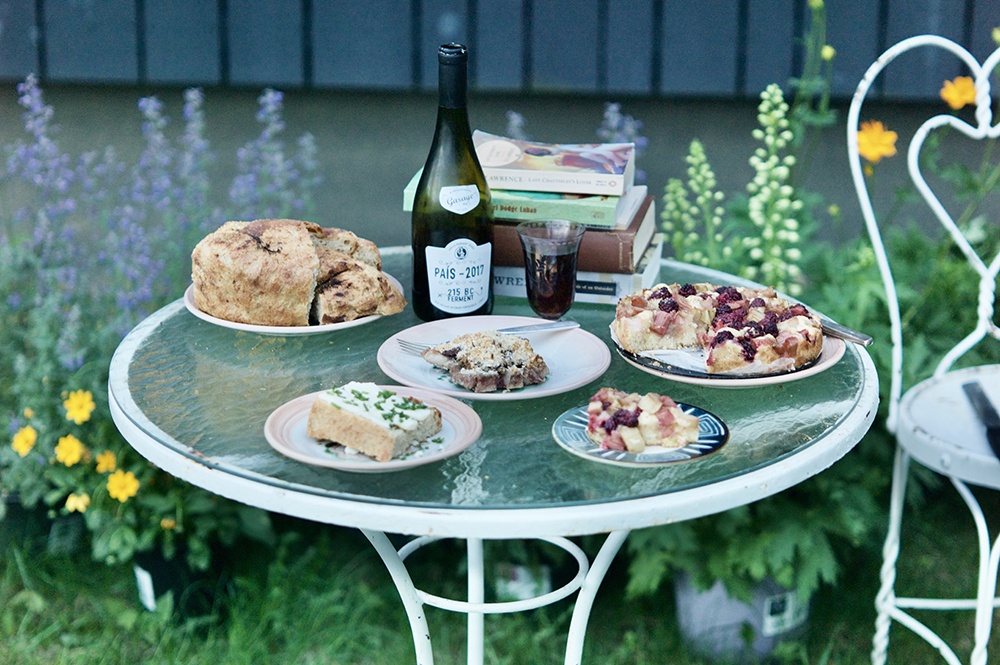
Comments
Post a Comment